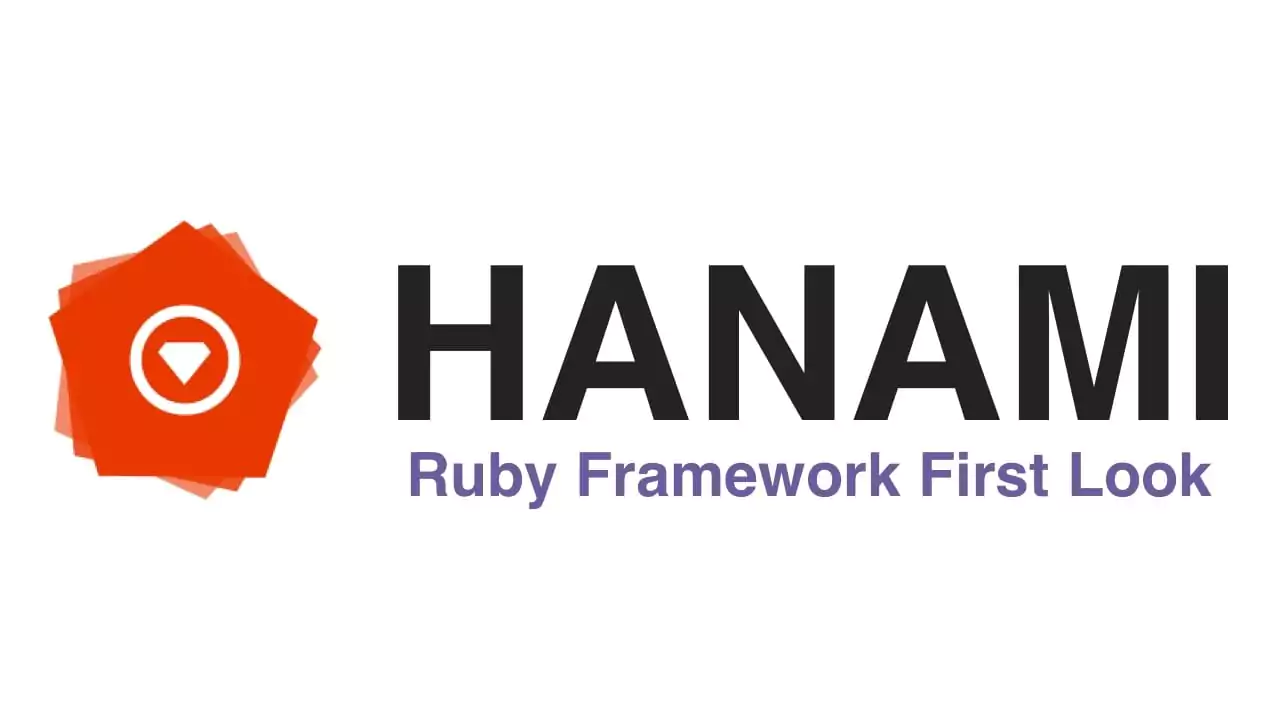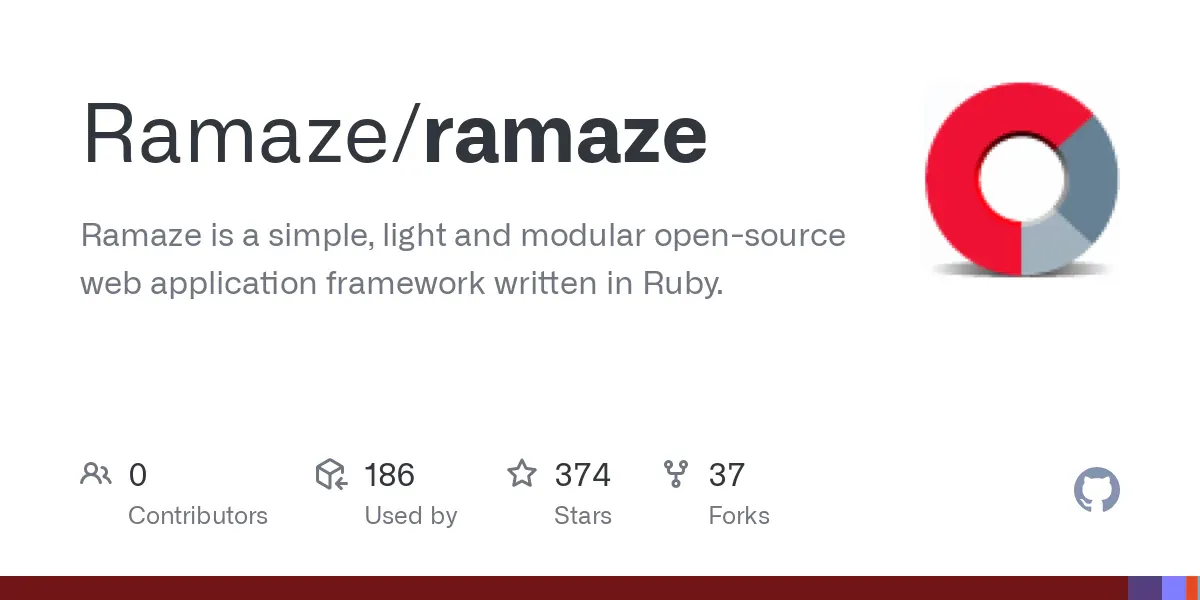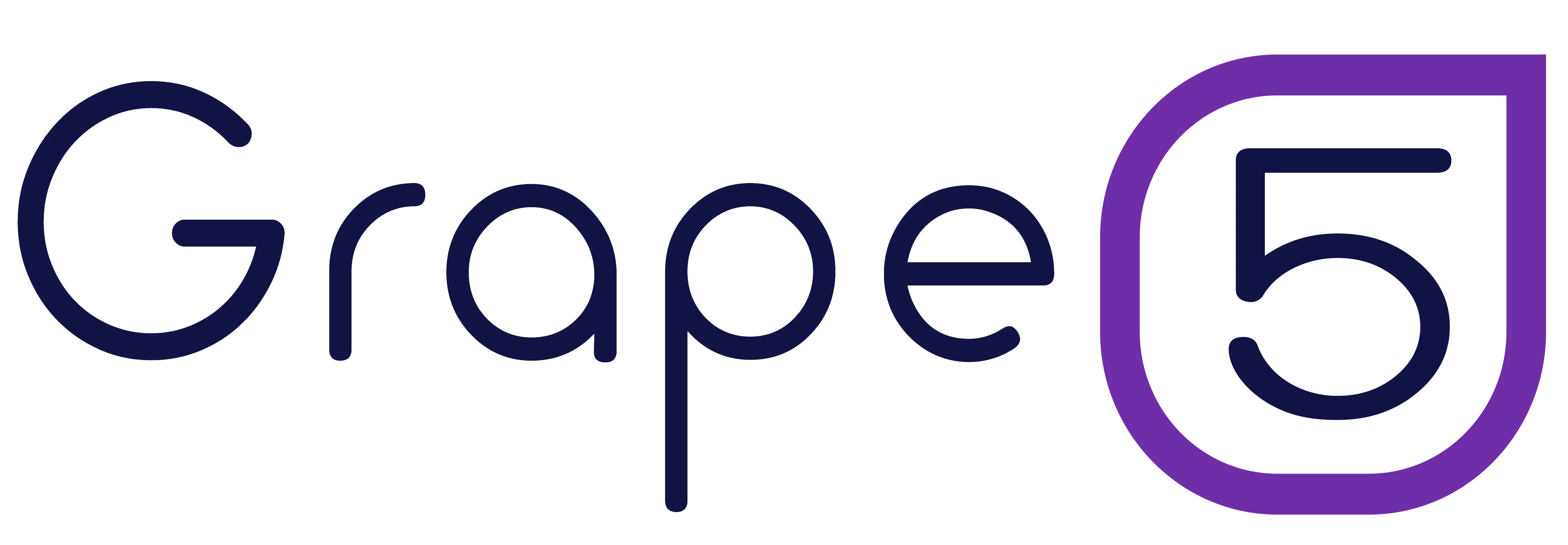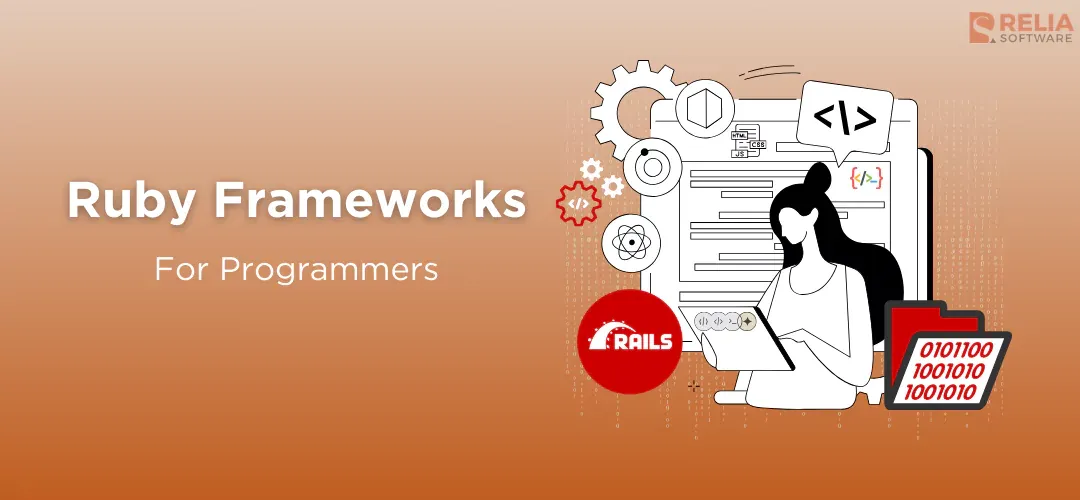The Ruby programming language has established a distinctive position in the developer community, known for its clear and concise syntax, ability to convey ideas effectively, and an extensive collection of libraries and frameworks. Within this ecosystem, Ruby frameworks enable developers to accelerate the web development process by offering pre-built structures and features.
This article will delve into the 10 most popular Ruby frameworks, especially for programmers. No matter how experienced you are with Ruby, this blog will show each framework's key features and competitive advantages for you to compare and decide which one is best suited to your project.
>> Read more:
- A Guide to Successfully Hiring Ruby on Rails Developers
- An In-Depth Guide for Deploying Ruby App to AWS Lambda
Ruby on Rails
Rails, the most popular Ruby framework, is a full-stack web development framework that follows the Model-View-Controller (MVC) design. Rails follows the conventions over configurations philosophy. This means that developers spend less time on setup and repetitive code and more time writing application logic and adding features. This, along with Rails' large developer community and an extensive ecosystem of libraries and gems, makes it perfect for quickly prototyping and feature-rich web applications.
Key Features:
- Rapid Prototyping and Development: Rails has pre-built components for core web application functionality. This lets developers construct apps quickly while prioritizing functionality.
- Database Agnosticism: Rails' abstraction layer communicates with PostgreSQL, MySQL, and SQLite3. The familiar Active Record interface is available to developers regardless of the database.
- Built-in Security: Rails prioritizes security with authentication, authorization, and SQL injection prevention. These traits shield web apps from typical vulnerabilities.
- Active Record Pattern: Rails' Active Record design lets developers create data models that correspond to database tables. This streamlines data interaction and saves the boilerplate.
Competitive Advantages:
- Developer Community: Rails has a large developer community. A rich collection of plugins extends functionality and meets varied development demands.
- Learning Curve: Rails is known for its simple syntax and extensive documentation. This simplifies learning for new developers.
- Scalability and Maintainability: Rails apps can handle increased traffic and complexity. The framework encourages well-organized codebases, easing software maintenance and development.
Best Suited:
- Rapid prototyping and web application development.
- E-commerce platforms.
- Content management systems (CMS).
- Project management tools.

Hanami
Hanami is a famous Ruby framework known for its modern architecture and emphasis on clean code principles. It is gaining traction owing to its modular and performance-oriented full-stack solution. Hanami successfully isolates issues by following a clean design strategy, resulting in codebases that are well-structured, manageable, and scalable.
Key Features:
- Micro-services architecture: Scales applications as independent services.
- Asynchronous processing: Improves responsiveness by doing tasks simultaneously.
- Built-in security features: Protects the program from typical vulnerabilities.
- Extensive testing libraries: Encourages robust and dependable code.
Competitive Advantages:
- Lightweight and fast: Provides excellent performance with minimum resource utilization.
- Modern design principles: Follows best practices for maintainability and scalability.
- Active development: Advantages of constant improvement and community input.
Best Suited:
- Modern web applications with a focus on performance and scalability.
- API development for complex integrations.
- Real-time applications requiring responsiveness.

Sinatra
Sinatra is a popular and minimalistic micro-framework within the Ruby ecosystem. Sinatra enables developers to construct web apps and RESTful APIs with minimal complexity and adaptability as the main focus. This feature makes it well-suited for the quick creation and advancement of web applications that are of a tiny to medium scale.
Key Features:
- Routing DSL: Allows you to define application routes shortly and legibly.
- Templating engines: Supports a variety of templating languages, including ERB, for dynamic content production.
- Middleware integration: Allows developers to incorporate extra capabilities via middleware components.
Competitive Advantages:
- Lightweight and fast: Provides excellent performance with low overhead.
- Easy to learn: Simple syntax makes it easier for new developers to get started.
- Highly customizable: Provides significant flexibility for developing applications tailored to unique requirements.
Best Suited:
- Rapid prototyping and development of small to medium-sized web applications.
- RESTful APIs for integration with other applications.
- Educational purposes due to its beginner-friendly nature.

Padrino
Inspired by the well-known Rails framework, Padrino is a lightweight and effective full-stack framework in the Ruby space. It offers a similar Model-View-Controller (MVC) architecture for developers working with Rails, simplifying the development process while providing greater flexibility and reducing the amount of code required. Padrino is well-suited for creating web apps with shorter development cycles and lower resource usage.
Key Features:
- MVC architecture: Keeps the well-organized code layout that Rails users are used to.
- Built-in components: Include basic features like routes, templates, and database access.
- Flexible middleware: Let developers customize application behavior through modular components.
Competitive Advantages:
- Faster development: A streamlined way for Rails-experienced developers.
- Reduced Resource Consumption: Its lightweight design makes it ideal for resource-constrained applications.
- Highly Customizable: Provides granular control over application functionalities.
Best Suited:
- Small to medium-sized web applications.
- Projects requiring a balance between features and performance.
- Deploying applications on servers with limited resources.

Ramaze
Ramaze stands out as a lightning-fast micro-framework in the Ruby ecosystem, emphasizing excellent performance and minimalism. This makes Ramaze excellent for developers who want to construct high-performance web applications and APIs efficiently.
Key Features:
- Lightweight core: Minimises the framework footprint for best performance.
- Flexible routing: Allows developers to build application routes creatively.
- Built-in templating engine: Enables the generation of dynamic content within web pages.
Competitive Advantages:
- Lightning-fast performance: Provides unparalleled speed for web applications.
- Easy to learn: Reduces the barrier to entry for new developers by simple syntax.
- Highly extensible: Allows for the insertion of extra capabilities via plugins.
Best Suited:
- Speed-focus and highly performant web applications or APIs.
- Rapid prototyping for validating application ideas.
- Educational purposes due to its beginner-friendly nature.

Cuba
Cuba is a lightweight MVC full-stack framework with an admirable blend of rich capabilities and simplicity. This makes Cuba an ideal choice for developers looking to create various web applications with a short development cycle.
Key Features:
- MVC architecture: Offers a well-organized code structure.
- Flexible routing: Allows you to define application paths in a customizable manner.
- Built-in functionality: Includes important capabilities such as templating and database access right out of the box.
Competitive Advantages:
- Easy to learn: Straightforward syntax reduces the barrier to entry for novice developers.
- Highly maintainable: A clean code structure encourages code maintenance.
- Extensible: Plugins allow for the introduction of extra capabilities.
Best Suited:
- Small to medium-sized web applications for balance between features and user-friendly applications.
- Rapid prototyping for validating application ideas.
- Educational purposes due to its beginner-friendly nature.

Goliath
Goliath emerges as a robust full-stack framework for developing extremely scalable and incredibly performant online applications. It is aimed at developers looking for a reliable solution to handle huge traffic levels and demanding workloads. Goliath accomplishes this through its asynchronous I/O and event-driven architecture, which allows for fast processing of concurrent requests and high numbers of connections.
Key Features:
- Asynchronous I/O: Enables efficient handling of concurrent requests, resulting in enhanced responsiveness.
- Event-driven architecture: Offers a scalable framework for managing huge numbers of connections.
- Built-in web server: This includes a high-performance web server, eliminating the need for external dependencies.
Competitive Advantages:
- Exceptional scalability: Can handle enormous traffic volumes efficiently.
- Lightning-fast performance: Provides excellent responsiveness in demanding applications.
- Highly customizable: Provides significant control over the application behavior.
Best Suited:
- Real-time applications requiring exceptional responsiveness.
- High-traffic web applications like chat platforms or social media backends.
- Applications on cloud platforms for elastic scaling.

NYNY
NYNY is a modular and simple full-stack framework in the Ruby world. Prioritizing clean architecture principles, NYNY encourages the creation of well-structured and highly maintained codebases. This emphasis on modular design allows developers to build applications with only the necessary components, resulting in a lightweight framework with a small footprint.
Key Features:
- Modular architecture: Allows unambiguous concern separation in applications.
- Focus on clean code: Promotes simple code to understand, maintain, and test.
- Lightweight core: Minimises the framework footprint for best performance.
Competitive Advantages:
- Highly scalable: The modular design enables applications to evolve naturally by adding new components as needed.
- Easy to learn: Simple syntax reduces the barrier to novice developers.
- Highly customizable: The modular architecture of the program allows for great flexibility over its functionalities.
Best Suited:
- Modern web applications with a focus on clean code principles and maintainability.
- Complex application development.
- Projects require a balance between features and performance, especially in resource-constrained environments.

Grape
Grape is a specialized and efficient full-stack framework that is specifically built for creating strong and efficient RESTful APIs. It places a high importance on writing code that is easy to understand and maintain, as well as on improving the speed and effectiveness of development.
This makes it an excellent choice for developers who want a streamlined approach to creating APIs. Grape enables users to construct APIs including built-in validation to guarantee the integrity of data and provides extensive documentation to streamline the development process.
Key Features:
- Lightweight core: Maintains a minimal framework footprint to ensure optimal performance.
- Resource-oriented design: Complements the RESTful API development philosophy.
- Built-in validation: Offers instruments to guarantee the integrity of data in APIs.
Competitive Advantages:
- Uncomplicated: The barrier to entry for new developers is reduced by the use of straightforward syntax.
- Highly modular: Enables developers to incorporate only the essential functionalities for their APIs.
- Extensively documented: Offers comprehensive documentation to expedite the development process.
Best Suited:
- Various RESTful APIs, ranging from simple single-purpose APIs to complex integrations for larger applications.
- Lightweight and focused solution for API development.
- Educational purposes due to its beginner-friendly nature and clear API design principles.

Roda
Roda is a full-stack framework in the Ruby domain that is known for its exceptional speed and minimalist design. Roda enables developers to build highly responsive web applications by prioritizing great performance and maintaining a clean codebase. This is accomplished by utilizing its lightweight core and Routing DSL, which is a specialized language that streamlines the process of building application routes.
Key Features:
- Lightweight core: Minimises the framework footprint for best performance.
- Routing DSL: Offers a Domain-Specific Language for concisely specifying application routes.
- Built-in templating engine: Allows you to generate dynamic content within your web pages.
Competitive Advantages:
- Outstanding performance: Provides lightning-fast response speeds for web applications.
- Easy to learn: Reduces the barrier to entry for novice developers by straightforward syntax.
- Highly extensible: Allows for the insertion of extra capabilities via plugins.
Best Suited:
- Real-time web applications or APIs where speed is critical.
- High-traffic web applications requiring exceptional responsiveness.
- Prototyping web applications to validate ideas quickly due to the framework's simplicity.

>> Read more:
- Top 10 Ruby On Rails Development Companies Worldwide
- Top 10 Best Ruby on Rails Gems in 2023
- Top 10 Ruby on Rails IDEs for Web Development Projects
Conclusion
Above are 10 popular Ruby frameworks for developers to choose the best fit their needs. Different frameworks have their distinctive strengths. Carefully analyze your project needs, objectives, and especially developers' skills before making decisions. Based on the information given above, hope that you can choose the best tool for your next web development work!
>>> Follow and Contact Relia Software for more information!
- development

